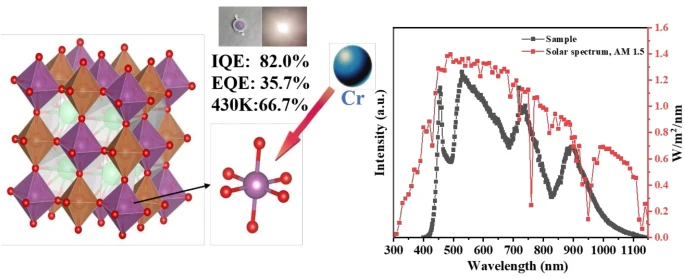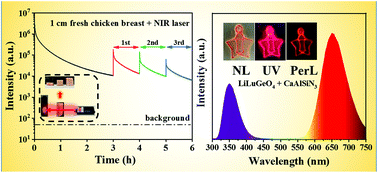Sci. China Mater. 65, 748–756 (2022).https://doi.org/10.1007/s40843-021-1785-6

For healthy lighting, daily lighting that considers both visible light and near-infrared (NIR) light is necessary. However, at ∼900 nm, the extensively used solar-like phosphor-converted light-emitting diodes (pc-LEDs) are limited by a lack of high-performance NIR luminescent materials. We report a broadband NIR phosphor Sr2ScSbO6:Cr3+ with a double perovskite-type structure, thus simultaneously demonstrating high luminescence efficiency and good thermal stability. Under 550-nm excitation, Sr2ScSbO6:Cr3+ demonstrates broadband NIR emission centered at ∼890nm with luminescence internal/external efficiencies of 82.0%/35.7%, respectively. Furthermore, the luminescence integrated intensity at 430 K remains at ∼66.4% of the initial intensity. We successfully fabricated pc-LED devices using a 465-nm-sized blue chip and other commercial phosphors, presenting a relatively complete solar-like spectrum from blue to NIR light and is expected to be used in solar-like lighting.









